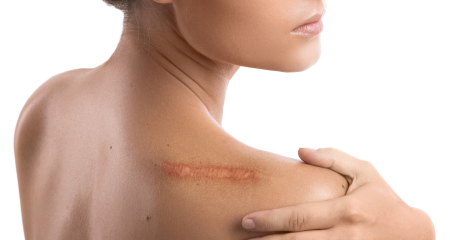
Keloids are abnormal scar tissue that may develop in some individuals in North Richland Hills following an injury to the skin or surgical procedure. Keloids are an overgrowth of connective tissue that forms in response to injury such as surgery, piercing, tattoos, certain skin conditions and/or other trauma. Keloids may develop quickly or may take years to develop.
Keloids tend to develop in certain areas of the body, including:
It’s important that you consult your dermatologist for evaluation of a keloid, since many factors play a role in determining the best treatment option(s). The size, depth and location of the keloid are important, as well as the patient’s age.
Some treatment options:
Intralesional injection: Intralesional injection of a keloid with a steroid is a common and conservative treatment option. Although the injections do not completely get rid of the keloid, they help soften and reduce the size of the lesion. Steroid injections also help alleviate any associated itching or irritation. However, repeat injections are often required.
Surgery: Surgical removal of a keloid is a temporary and risky solution since keloids may grow back, and often, re-growth results in a larger lesion. If you have had a keloid removed and it grew back, re-excision is discouraged.
Radiation Therapy: Can destroy collagen-producing cells and reduce itching and redness but will not resolve existing keloids. It can be used following excision to help reduce the likelihood of recurrence, although there is still the risk of recurrence.
Treatment combinations may also be recommended.
If you are at risk of developing keloids, it’s important to avoid piercings, tattoos, cosmetic surgery or other elective procedures that could lead to keloid formation.
In cases where surgery is necessary, talk to your doctor about ways to lessen the appearance of keloid scarring, including: Making incisions at natural skin creases, avoiding tight sutures and practicing good wound care to reduce the risk of inflammation or infection.
